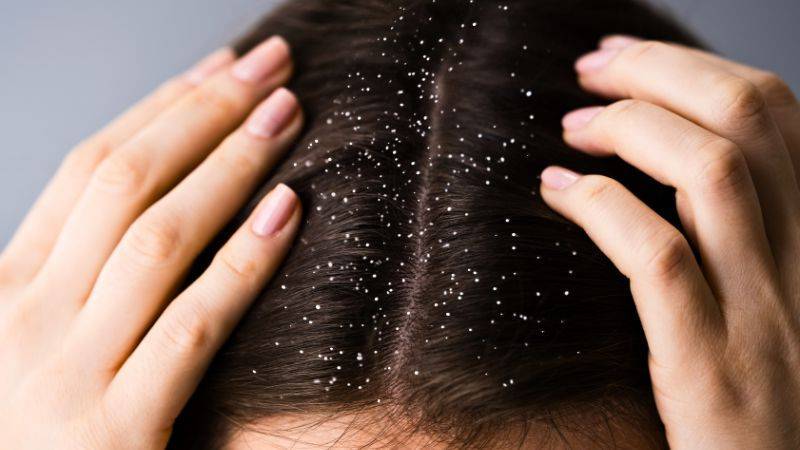In This Page
Adequate sleep is crucial for maintaining overall wellness. Consistently lacking sufficient sleep can significantly affect mental and physical health, as well as one’s quality of life.
Up to one-third of individuals may experience sleep difficulties at some point.
Between 6 to 10 percent of adults experience symptoms severe enough to be diagnosed with sleep disorder.
However, various strategies can improve sleep quality. This guide highlights several effective methods, such as relaxing before bed, steering clear of particular foods and beverages, and establishing a bedtime routine.
What is Insomnia?

Insomnia- poor sleep quality, a sleep disorder characterized by persistent difficulty falling asleep, staying asleep, or both.
It can result in inadequate sleep quality, quantity, or both, leading to various daytime impairments such as fatigue, irritability, and difficulty concentrating.
Roughly one-third of adults experience inadequate sleep, which can manifest as:
- Difficulty falling asleep
- Waking up too early
- Frequent nighttime awakenings
- Feeling unrefreshed after sleeping
Long-term poor sleep can significantly impact daily life by causing:
- Daytime fatigue and reduced energy levels
- Poor concentration
- Diminished interest in typical activities
- Irritability
- Depression and anxiety
- Decreased ability to perform tasks, such as work, social activities, or exercise, potentially leading to errors or accidents
- A decline in overall quality of life
What Constitutes a Normal Amount of Sleep?
Sleep requirements vary among individuals. While children need more sleep than adults.
- Adult sleep duration ranges from 6 to 9 hours for optimal refreshment
- Sleep-Wake Cycle usually established in early adulthood
- Sleep duration tends to decrease with age
- Falling asleep typically takes under 30 minutes
- Sleep should be sufficient for feeling refreshed and alert during the day
Normal Sleep Patterns

A typical night’s sleep consists of three primary components:
- Quiet sleep: Also known as deep sleep, quiet sleep is divided into stages 1-4, with each stage becoming progressively deeper.
- Rapid eye movement (REM) sleep: This phase is characterized by heightened brain activity while the body remains limp, except for rapid eye movements. Most dreaming takes place during REM sleep.
- Brief waking periods: These last for 1-2 minutes and typically occur every couple of hours, with increased frequency towards the end of the night.
Throughout the night, 4-5 cycles of quiet sleep alternate with 4-5 cycles of REM sleep.
In a normal sleep pattern for a young adult, brief waking periods lasting less than 2 minutes usually go unnoticed.
However, external disturbances, such as snoring or traffic noise, can prolong these waking periods, making them more memorable.
Causes of Insomnia

Insomnia can develop without an apparent reason, but several possible causes include:
- Concern about wakefulness: Worrying about waking up at night and difficulty returning to sleep can lead to anxiety and increased wakefulness.
- Temporary issues: Sleep disturbances can occur due to stress, personal or work-related problems, jet lag, new routines, or unfamiliar environments. Sleep usually improves over time.
- Stress, anxiety, or depression can interfere with sleep. Treating underlying mental health issues often resolves sleep problems.
- Sleep apnea: Common in snorers and obese individuals, sleep apnea can cause nighttime awakenings and daytime tiredness.
- Other illnesses: Various health conditions can disrupt sleep, including pain, leg cramps, breathing difficulties, indigestion, coughing, itching, hot flashes, and mental health problems.
- Stimulants: Alcohol, caffeine, and nicotine can interfere with sleep quality.
- Street drugs: Substances like ecstasy, cocaine, cannabis, and amphetamines can impact sleep.
- Prescribed medications: Some medicines may disrupt sleep or cause rebound insomnia when discontinued.
- Screen time: Exposure to electronic screens, particularly before bedtime, can affect sleep quality.
- Unrealistic expectations: Individual sleep needs vary; some people naturally require less sleep.
- Vicious cycle: Worrying about poor sleep can exacerbate the problem.
- Sleep paralysis: Inability to move or speak while waking or falling asleep.
Symptoms of Insomnia
Insomnia can generally be identified by the following signs:
- Waking up too early and struggling to fall back asleep
- Spending a significant portion of the night awake and worrying about not sleeping
- Experiencing fragmented or disrupted sleep that fails to rejuvenate you
- Having difficulty falling asleep once in bed
Consequently, you may encounter additional symptoms linked to sleep deprivation, such as:
- Fatigue
- Irritability and mood fluctuations
- Trouble concentrating or recalling information
Types of Insomnia
Insomnia can be classified in several ways based on its specific features:
- Acute insomnia: Short-term sleep difficulties, usually lasting up to a few weeks.
- Chronic insomnia: Persistent insomnia affects sleep for at least 3 nights a week, generally for 3 months or longer.
- Onset insomnia: Difficulty falling asleep, potentially caused by caffeine use, mental health issues, or other triggers, or associated with other sleep disorders.
- Maintenance insomnia: Trouble staying asleep, consistently waking up too early, or both. This type may be linked to underlying health or mental health issues, and worrying about insufficient sleep can worsen the condition.
- Behavioral insomnia of childhood: Persistent difficulty falling asleep, resistance to bedtime, or both. Affected children often benefit from self-soothing strategies and a regular sleep routine.
Insomnia can also be categorized as primary (idiopathic) or secondary (comorbid):
Primary insomnia: Sleep difficulty without an identifiable cause or related health or mental health condition. Factors contributing to primary insomnia can include stress, anxiety, poor sleep habits, or environmental factors such as noise or light.
Secondary insomnia: Sleep difficulty associated with medical disorders, medications, mental health issues, or substance use contributing underlying factors, such as:
- Chronic pain or illness
- Mental health conditions like depression or anxiety
- Shift work
- Certain medications
Diagnosis

A healthcare professional will typically diagnose insomnia based on a patient’s medical history, sleep habits, and any underlying conditions that could be contributing to the sleep problem. This may involve:
- A thorough medical history and physical examination
- A sleep diary, in which the patient records their sleep patterns and habits
- Sleep questionnaires to assess sleep quality and daytime functioning
- In some cases, an overnight sleep study (polysomnography) may be recommended to rule out other sleep disorders.
Treatment
Treatment depends on the underlying cause and the severity of the condition. Some common treatment options include:
Behavioral and lifestyle changes
- Establishing a consistent sleep schedule
- Creating a relaxing bedtime routine
- Limiting exposure to screens and electronic devices before bed
- Reducing caffeine and alcohol intake
- Engaging in regular physical activity
Cognitive-behavioral therapy for insomnia (CBT-I)
This form of therapy focuses on identifying and changing negative thoughts and behaviors related to sleep.
The American College of Physicians (ACP) recommends CBT as the first-line treatment for chronic insomnia in adults.
CBT-I is a specific subtype of CBT that addresses insomnia. Techniques used in CBT-I include:
- Stimulus control: Learning to leave the bed and engage in a calming activity until feeling sleepy, reducing time spent worrying about sleep.
- Sleep restriction: Initially limiting and gradually increasing time spent in bed to improve sleep efficiency and quality.
- Bright light therapy: Exposure to bright light in the morning or evening, depending on specific sleep issues.
A therapist may also teach relaxation techniques and sleep hygiene practices, such as avoiding caffeine, heavy meals, or intense exercise near bedtime.
Medications and Supplements
In some cases, prescription or over-the-counter sleep aids may be recommended.
Prescribed medications for insomnia may include
- Eszopiclone (Lunesta)
- Zolpidem (Ambien)
- Triazolamm (Halcion)
Over-the-counter (OTC) sleep aids and supplements like melatonin can also provide relief.
Consult a healthcare professional before trying supplements or OTC medications, as they may have side effects or interact with other medications.
Treating underlying conditions
Addressing any medical or psychiatric conditions that may be contributing to insomnia is crucial for improving sleep quality.
It’s essential to consult a healthcare professional to determine the appropriate treatment approach for insomnia based on individual needs and circumstances.
Sleeping Pills are generally not recommended

The primary types of sleeping pills belong to a class of medications called Benzodiazepines and another called Z drugs. Although these medications were once commonly prescribed, they are now used less frequently due to potential problems.
If a sleeping tablet is prescribed, it’s typically for a short course (about a week) to help overcome a particularly challenging period.
Potential issues with sleeping tablets include:
- Next-day drowsiness, which can affect your ability to drive or operate machinery safely.
- Clumsiness and confusion at night if you need to get up, possibly leading to falls or accidents (older individuals taking sleeping tablets have an increased risk of falls and hip fractures).
- Tolerance may develop with regular use, requiring progressively higher doses for the same effect.
- Some individuals may become dependent on sleeping tablets and experience withdrawal symptoms when they are suddenly stopped.
Alternative medications to aid sleep include Melatonin and certain Antihistamines.
Some people use herbal remedies, such as Valerian, to help with sleep. However, research studies have shown little evidence to support their effectiveness, so they are not typically recommended.
Long-term use of sleeping tablets has been associated with serious health issues, including increased risk of Dementia and earlier death.
If you’ve been taking sleeping tablets for an extended period, your doctor should regularly review your prescription, discussing the benefits and potential harms.
If you wish to stop, find that the tablets are no longer helpful, or they are causing harm, your doctor may recommend gradually discontinuing them with proper support.
10 Tips for a Sound Sleep

The following general tips, often referred to as sleep hygiene, can help promote better sleep for those experiencing difficulties:
- Limit caffeine: Avoid consuming foods, drinks, or medications containing caffeine or other stimulants for 6 hours before bedtime.
- Avoid smoking: Refrain from smoking within six hours before bedtime.
- Limit alcohol: Do not drink alcohol within 6 hours before bedtime.
- Eat mindfully: Avoid heavy meals before bedtime, though a light snack may be helpful.
- Establish a routine: Create a consistent daily pattern of wakefulness and sleepiness to help your body adjust. Avoid napping during the day, go to bed only when you feel tired at night, and always wake up at the same time every day, even on weekends.
- Optimize your bedroom: Ensure your bedroom is quiet, relaxing, and at a comfortable temperature. Use earplugs or eye masks if necessary, and make sure the room is dark with good curtains. Reserve the bedroom for sleep and avoid using it for work, eating, or watching TV. Consider changing your bed if it’s uncomfortable or old.
- Hide your alarm clock: Avoid clock-watching, as it can make it more difficult to fall asleep.
- Create a bedtime routine: Engage in relaxing activities before bedtime, such as taking a walk, reading, or enjoying a warm, caffeine-free drink. Avoid mentally demanding tasks within 90 minutes of bedtime.
- Use soothing music: Soft music at bedtime may be helpful. Use a timer to switch off the music after about 30 minutes.
- Leave the bed if necessary: If you can’t fall asleep after 20-30 minutes, get up and engage in a relaxing activity until you feel drowsy, and then return to bed to try sleeping again.
In a Nutshell
Consult a physician if you suspect an illness or medication is contributing to poor sleep. Addressing the root cause of the issue, if possible, may help improve sleep quality.
Notably, depression and anxiety are frequent culprits of disrupted sleep, and they can often be effectively treated.
Take Care of Yourself!
Also Read





